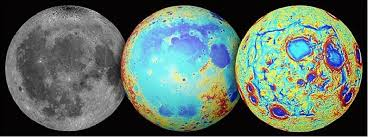
Breaking News
Living a Creative Life Maximizes Your Life
SEMI-NEWS/SEMI-SATIRE: November 9, 2025 Edition
 Trump pardons Mets legend, 'Celebrity Apprentice' alum Darryl Strawberry over tax evasion co
Trump pardons Mets legend, 'Celebrity Apprentice' alum Darryl Strawberry over tax evasion co
 You WON'T BELIEVE How Much Money We're REALLY Sending To Israel!
You WON'T BELIEVE How Much Money We're REALLY Sending To Israel!
Top Tech News
 HUGE 32kWh LiFePO4 DIY Battery w/ 628Ah Cells! 90 Minute Build
HUGE 32kWh LiFePO4 DIY Battery w/ 628Ah Cells! 90 Minute Build
 What Has Bitcoin Become 17 Years After Satoshi Nakamoto Published The Whitepaper?
What Has Bitcoin Become 17 Years After Satoshi Nakamoto Published The Whitepaper?
 Japan just injected artificial blood into a human. No blood type needed. No refrigeration.
Japan just injected artificial blood into a human. No blood type needed. No refrigeration.
 The 6 Best LLM Tools To Run Models Locally
The 6 Best LLM Tools To Run Models Locally
 Testing My First Sodium-Ion Solar Battery
Testing My First Sodium-Ion Solar Battery
 A man once paralyzed from the waist down now stands on his own, not with machines or wires,...
A man once paralyzed from the waist down now stands on his own, not with machines or wires,...
 Review: Thumb-sized thermal camera turns your phone into a smart tool
Review: Thumb-sized thermal camera turns your phone into a smart tool
 Army To Bring Nuclear Microreactors To Its Bases By 2028
Army To Bring Nuclear Microreactors To Its Bases By 2028
 Nissan Says It's On Track For Solid-State Batteries That Double EV Range By 2028
Nissan Says It's On Track For Solid-State Batteries That Double EV Range By 2028
Grail satellite analysis indicates lava tubes on the moon could be up to 1000 to 5000 .....

Like the lava tubes of Hawaii and Iceland, these structures probably formed when underground rivers of molten rock ran dry, leaving behind a cylindrical channel. On Earth, such structures max out at around 30 meters across, but the gravitational data suggest that the moon's tubes are vastly wider.
Other satellites had found the openings of large lunar lava tubes and caves
The Lunar Reconnaissance Orbiter has now imaged over 200 pits that show the signature of being skylights into subsurface voids or caverns, ranging in diameter from about 16 feet (5 meters) to more than 2,950 feet (900 m), although some of these are likely to be post-flow features rather than volcanic skylights.
The Chandrayaan-1 orbiter imaged a lunar rille, formed by an ancient lunar lava flow, with an uncollapsed segment indicating the likely presence of a lava tube near the lunar equator, measuring about 2 km (1.2 mi) in length and 360 m (1,180 ft) in width

 Carbon based computers that run on iron
Carbon based computers that run on iron

